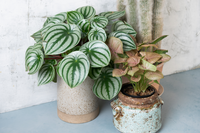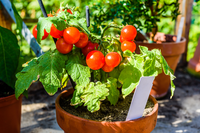 There is nothing more frustrating than finding pests and diseases on your lovely plants after tending to them with love and attention. Fortunately, there are many ways to minimise the risk of plant pests and diseases, mainly ensuring they receive the care that they need. But even after all of your efforts, they can still sneak up on your plants and be a real pain. Plants that are thriving, indoors or outside will not show any signs of yellowing or brown leaves or dry, curly edges. Whilst many of these could also be a sign of not optimum conditions, which in itself can lead to pests and diseases but this is a sign your plants are in distress. Keep a check on watering levels, light levels and make sure you have the right plant for the right place which will help to minimise any problems. So, if you are concerned about pests and diseases on your plants, this guide will help you to identify them.
There is nothing more frustrating than finding pests and diseases on your lovely plants after tending to them with love and attention. Fortunately, there are many ways to minimise the risk of plant pests and diseases, mainly ensuring they receive the care that they need. But even after all of your efforts, they can still sneak up on your plants and be a real pain. Plants that are thriving, indoors or outside will not show any signs of yellowing or brown leaves or dry, curly edges. Whilst many of these could also be a sign of not optimum conditions, which in itself can lead to pests and diseases but this is a sign your plants are in distress. Keep a check on watering levels, light levels and make sure you have the right plant for the right place which will help to minimise any problems. So, if you are concerned about pests and diseases on your plants, this guide will help you to identify them.
Aphids on indoor and outside plants mean you have pests and diseases
Aphids, whilst small can be really easy to spot if you are keeping a close eye on your plants. Often Aphids head straight for a plant in trouble and can completely cover stems and leaves. If the tiny insects are green, you have greenfly, if they are black you have black fly and white means whitefly! So all very easy to distinguish. You can safely eradicate them by spraying your plants with a soapy water spray and ensuring your plants are well looked after in the correct conditions.
Holes in brassica leaves are a sign of pests and diseases in the vegetable garden
The beautiful cabbage white butterfly is lovely to watch flying around the garden but if it makes its way anywhere near your cabbages, sprouts, cauliflower and any other brassica you will soon find holes in the leaves. The cabbage white butterfly readily lays eggs on the undersides of leaves which as they grow much on your tasty vegetables and leave many holes. Net your brassicas to keep them off, plus rub off the eggs and keep a regular check.
Pests and Diseases come in all shapes and sizes in the garden
There are many diseases from rot to canker, clubroot to rust just to name a few. The best way to identify each one is to know what your plants should look like when healthy. Then anything different to the norm, you will know a further investigation is needed. If your onion stems have an orange, rusty discolouration then you know that rust, if the base of the stem on your Cactus is getting brown you may have rot. Keep a constant eye on your plants and take action.
Our team can help you with any questions you may have about plants showing signs of pests and disease, so come in to see us and chat with our friendly team.




